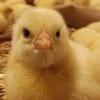Explore all the information on
Mycotoxins in poultry
Common mycotoxins associated with mycotoxicoses in poultry include aflatoxins, fumonisins, zearalenone, ochratoxins, and trichothecenes such as deoxynivalenol and T-2 toxins. Diagnosis requires detection and quantification of the specific mycotoxin. Treatment includes removal of the source of the mycotoxin and supportive care. Mold mitigation strategies can be used for prevention. Mycotoxicoses are diseases caused by the poisonous effects of the toxins produced by filamentous microfungi (ie, toxigenic molds). Hundreds of mycotoxins are known and can produce mild to severe toxic effects when they occur above levels of concern. The importance of mycotoxin problems in poultry is probably considerable yet difficult to measure. Chronic low levels of exposure to more than one type of mycotoxin appears to be a commonality, yet is less clinically evident.
Introduction Mycotoxins are secondary fungal metabolites, whose presence in feed and foodstuffs. Ochratoxin A (OTA) is one of the most known mycotoxins with greatest public health and agro-economic significance (Duarte 2011). Whereas, OTA is considered a potent nephrotoxic and hepatotoxic effects (Stormer and Lea, 1995). In commercial birds, consumption of OTA-contaminated diets has been related to clinical signs of...
Comments : 0
Recommendations: 0
Hello, These lesions appear in broilers beginning with 20 days of age. It is random and exclusive to 30% of the farm not 100%. Initially I thought the black content (found in the gizzard and in the crop, until the duodena, but not in the cecum) was digested blood. Now I don't know what to think. The chick are not eating, not drinking, first with low mortality, now more... the feed is from the same place as all the farm, and every one is from the same hatchery,...
Comments : 36
Recommendations: 0
Last November, one of Argentina’s largest table egg producers conducted a trial using Mycofix® Select in the diet of laying hens at a concentration of 750g for 2 weeks and 500g per ton of feed for an additional 3 weeks. November/December is...
Comments : 0
Recommendations: 0
Mycotoxins are a large group of toxins produced by moulds and they can be very toxic for animals, plants and humans. To date we know of approximately 300 different mycotoxins and data from the UN has shown that mycotoxins are present in more than 30% of the cereals produced worldwide. The challenge with mycotoxicosis is that it is very difficult for the producer to clearly diagnose. However, every poultry producer knows that mycotoxins...
Comments : 2
Recommendations: 0
1 Department of Pharmacology, Toxicology and Biochemistry, Faculty of Veterinary Medicine, Ghent University, Salisburylaan 133, Merelbeke 9820, Belgium 2 Department of Pathology, Bacteriology and Avian Diseases, Faculty of Veterinary Medicine, Ghent University, Salisburylaan 133, Merelbeke 9820, Belgium; 3 Biomin Research Center, Technopark 1, Tulln 3430, Austria; ...
Comments : 0
Recommendations: 0
Fernando Tamames from Special Nutrients Inc. speaks about the trial they have done in Brazil about how mycotoxins can affect layers regarding egg shell quality and egg weight and how birds can be protected with Myco-AD and Myco-AD-A-Z. ...
Comments : 0
Recommendations: 0
Benoit Thys presents Freetox, Nutrex's toxin binder and speaks about its benefits in livestock production and how it helps avoid animal contamination through feed....
Comments : 2
Recommendations: 0
Introduction There has been a steady increase in the poultry meat and egg production globally during the past few decades. Though the high biological value of eggs and poultry meat have resulted in an increasing demand for these two products, growing awareness for food quality and safety are becoming increasingly significant in determining the market value. The importance of mycotoxins as one of the major detractor of...
Comments : 1
Recommendations: 0
It has been known for decades that aflatoxin B1 severely depresses the growth rate and viability of poultry species with younger animals being most susceptible. Intensive investigations since that time have demonstrated that certain phyllosilicates, usually addressed as hydrated sodium calcium aluminosilicates (HSCAS), have the ability to bind aflatoxin B1 and alleviate clinical symptoms of aflatoxicosis. The purpose of this experiment was to test the...
Comments : 0
Recommendations: 0
1. Introduction Avian mycotoxicosis refers to all the diseases caused by the effect of mycotoxin in birds. These diseases may not be pathognomonic and sometimes subclinical and difficult to diagnose. The problem is worldwide but effort will be made to localise the effect of these diseases in developing countries. Developing countries have more than 50% of total meat and egg production in global poultry market: [1]. The...
Comments : 1
Recommendations: 0
Journal of Food Research; Vol. 2, No. 2; 2013 ISSN 1927-0887 E-ISSN 1927-0895 Published by Canadian Center of Science and Education Received: July 8, 2012 Accepted: March 2, 2013 Online Published: March 27, 2013 doi:10.5539/jfr.v2n2p128 URL: http://dx.doi.org/10.5539/jfr.v2n2p128 ...
Comments : 0
Recommendations: 0
Introduction The poultry industry is perhaps the most sensitive sector of animal production. The high degree of genetic development seeking greater productivity could have been responsible for the development of animals more susceptible to diseases. Therefore, as a result of the constant challenges experienced by these birds, their immune system must be running smoothly so they can respond to different stimuli (Santos...
Comments : 1
Recommendations: 0
1. - Introduction Mycotoxins are a diverse group of toxic secondary metabolites produced by certain moulds when they grow on agricultural products. They do not belong to a single class of chemical compounds, and they differ in their toxicological effects. Some mycotoxicoses, the toxic manifestations of mycotoxins in humans or animals, have been known for hundreds of years (e.g.ergotism).However, it wastheoutbreak of Turkey X disease in the United Kingdom during...
Comments : 3
Recommendations: 0


Supplemental dietary methionine sources have a neutral impact on oxidative status in broiler chickens
Suggested link
Douglas Zaviezo from Special Nutrients, speaks about fumonisins at VIV Asia March 2013 in Bangkok, Thailand. ...
Comments : 0
Recommendations: 0
This paper was published in "Eurasian J Vet Sci, 2016, 32, 2, 55-73" http://www.eurasianjvetsci.org/pdf/pdf_EJVS_1111.pdf
Introduction
Aflatoxins (AF) are a major concern in poultry production and public health because of...
Comments : 4
Recommendations: 0
Introduction:
Fungi live everywhere, in the air, in water, in soil, on land and on plants and animals. There are a million or more species of fungi and this includes both advantageous and toxigenic fungi. Toxigenic fungi are ubiquitous and, in some cases, apparently have a strong ecological link with animal feed and human food supplies. The natural fungal flora existing in conjunction with...
Comments : 1
Recommendations: 0
As a poultry and egg producer one is used to ups and downs in income and costs. However, when income is low and costs are high, the continuation of an enterprise is at stake. Then it is wise to be extra alert on subclinical dangers that might threaten a company's liveability. One of those unnoticed threats is often a low level infection of mycotoxins. ...
Comments : 1
Recommendations: 0
INTRODUCTION The levels of vitamins for poultry have changed a little over the last 40 years; however, the modern broiler has improved drastically its performance during the same period. Furthermore, an optimum level of vitamins is crucial under high stress condition to allow the birds achieve good performance and adequate health status. In this context, aflatoxin contamination of foods and livestock feeds became a great...
Comments : 3
Recommendations: 0
Introduction T-2 toxin (T-2) is a naturally occurring mycotoxin from the group of the trichothecenes, produced by Fusarium spp. mainly before harvesting. T-2 has been characterized by oral lesions and reduced growth in chickens, as well as the inhibition of protein synthesis, responsible for the negative effects on rapidly dividing cells such as those of the oral cavity, gastrointestinal tract, and lymphoid tissues....
Comments : 2
Recommendations: 0





.jpg&w=3840&q=75)





.jpg&w=3840&q=75)





















